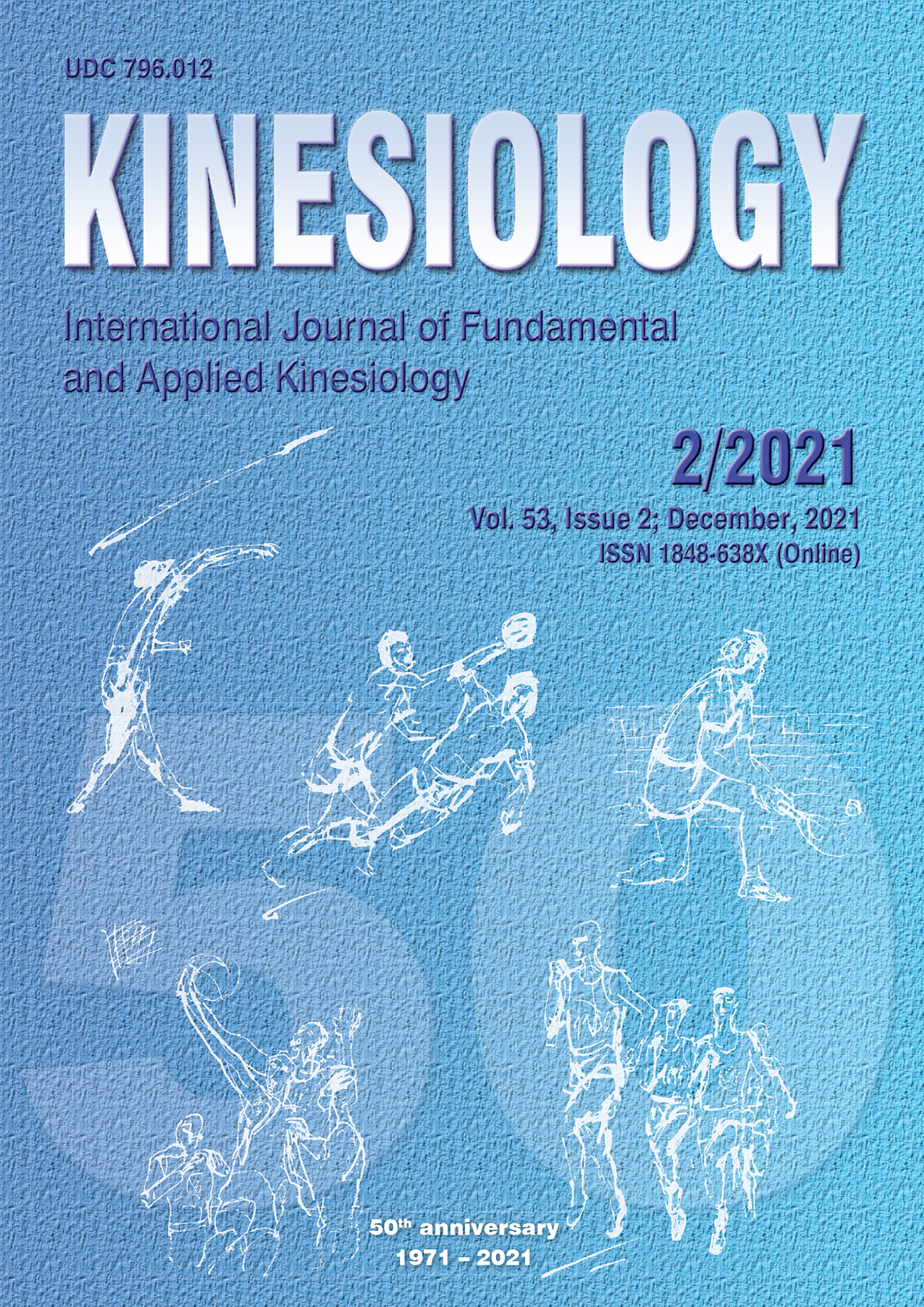EFFECTS OF SHORT-TERM STRENGTH AND JUMPING EXERCISES DISTRIBUTION ON SOCCER PLAYER’S PHYSICAL FITNESS
Abstract
The aim of this study was to examine the effects of a short-term (six weeks) preseason strength and jumping exercises distribution program on amateur adult soccer player’s indicators of physical fitness. Twenty male athletes (age 20.1±1.6 years) were randomly divided into two groups that completed a volume-equated training program differing only in exercises distribution: a group that completed three weeks of strength followed by three weeks of plyometric training (TT; n=10) and a group that completed six weeks of combined strength and plyometric drills (S+P; n=10). Athletes completed a triple hop test with the dominant (HOPd) and non-dominant leg (HOPnd), a 15 meters sprint, a change of direction speed (CODS) test (i.e. T test), and a 6×30 meters repeated sprint with change of direction for the best (RSCODb) and mean velocity (RSCODm), and the percentage of decrement (%Dec) in sprint time. Moreover, athletes performed a squat test for maximal power. Both strength and jumping training programs were performed two times per week, equated for exercises, frequency, volume, and intensity per session. The TT group completed the strength training volume during the first three weeks, and the plyometric training volume in the last three weeks, while the S+P combined strength and plyometric training during the six weeks. A 2 (group) × 2 (time: pre, post) ANOVA with repeated measures was used for statistical analysis. Analyses revealed significant improvements for the TT and S+P (HOPd: ES=0.91, 10.28 and 16.69%, respectively; HOPnd: ES=0.86, 11.49 and 14.71%, respectively; RSCODb: ES=0.84, 9.23 and 8.34%, respectively; RSCODm: ES=0.89, 8.56 and 7.51%, respectively). In the post-test there were no significant differences between the groups in any variable analyzed. In conclusion, both training approaches were equally effective at improving jumping and repeated sprinting ability. However, only after the S+P training approach a significant improvement in CODS was observed, with more substantial changes in maximal sprinting speed.
Key words: football, complex training, stretch-shortening cycle, repeated sprint ability, explosive training, jump training
Downloads
Published
How to Cite
Issue
Section
License

This work is licensed under a Creative Commons Attribution-NonCommercial 4.0 International License.
At Faculty of Kinesiology we recognize that access to quality research is vital to the scientific community and beyond. Kinesiology is non-profit journal and all costs of publishing and peer review process are covered by the publisher itself or other funding sources like Ministry of Science and Education of the Republic of Croatia. Full text papers are also available free of charge at http://hrcak.srce.hr/kineziologija. There are no restrictions on self archiving of any form of paper (preprint, postprint and publisher's version).
Articles are distributed under the terms of the CC BY - NC 4.0
Kinesiology does not charge any fees to authors to submit or publish articles in our journal.


